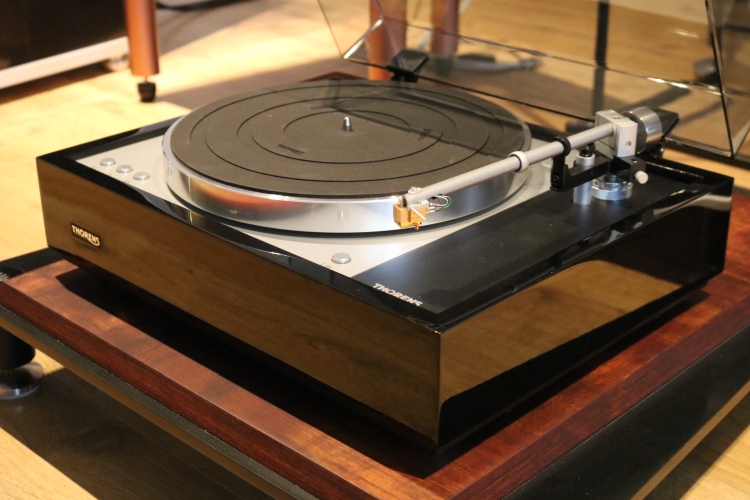
Thorens is back!
Review sample supplied by LookenListen, distributor for the Benelux
Retail prices in the NL, including 21% VAT:
TD1600 – 2.499 euro
TD1601 – 2.999 euro
Although there seems to be a belief that Linn more or less invented belt-driven turntables it was actually the Thorens TD150 issued in 1965 that inspired Linn to create their LP12. Thorens and Linn subsequently both popularized the suspended belt-drive principle and particularly Linn had a lot of influence in the UK for promoting the belt-drive at the expense of the Japanese direct drive. The Thorens TD150, however, was in turn inspired by the AR-XA, a suspended, belt-driven, sub-chassis turntable designed by Edgar Villchur of Acoustic Research in 1961.
The principle behind the suspended sub-chassis is that the platter, sub-chassis, armboard and tonearm form a mechanically coupled unit that sits on top of (or hangs from) dampers (usually three springs) which isolate the sub-assembly from the motor and the base. The motor, which is mounted on the top plate, drives the turntable platter via a belt. To this day, this principle is unchanged.
Back in the day, while the principle was the same, the main differences between Thorens TD150 and the Linn LP12 were that the Scottish player used better materials made to tighter tolerances. Still, even if the Thorens TD150 and TD160 and their derivatives were very cost-effective, they were so well-designed and robust that these turntables became world-famous. And as I can confirm from personal experience, these turntables are pretty much indestructible. With very few exceptions, they all play as well now as they did 40+ years ago. No doubt in part due to their robustness, but also thanks to their fantastic price/performance ratio, these classic turntables remain popular to this day.
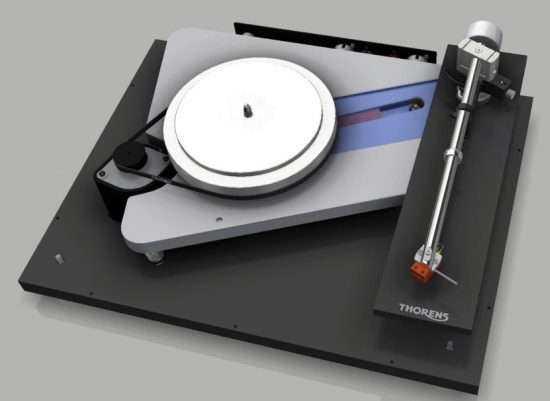
TD1601 sub-chassis where the blue part is a solid metal connection between platter and arm.
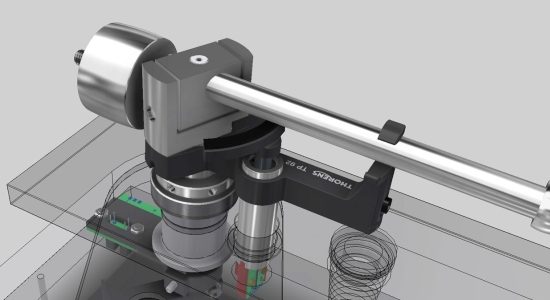
TD1601 arm and frictionless optical sensor underneath
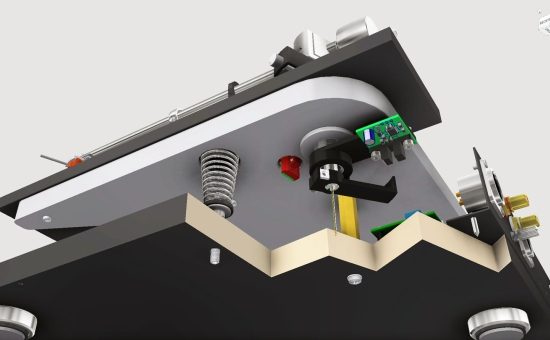
While there is no doubt that a current Linn LP12 is built more solidly and to higher overall standards than the classic Thorens turntables, the new TD1601 absolutely sets new standards for the brand. Also, personal preferences also come into play. There is something to the sound of a TD160MkII or a TD125MkII that makes me like these players even in comparison to more flashy and much more costly current high-end designs. With the recent introduction of the TD1600 and TD1601, Thorens has taken the classic, proven, designs and meticulously made improvements in key areas to arrive at two instant new classics. Priced at an absolutely reasonable 2500 and 3000 euro, and now having heard the latter, I can say with full confidence that Thorens is back!
Thorens History in brief
Thorens was founded in 1883 in Sainte-Croix in Switzerland. The product portfolio initially included music boxes, phonographs, gramophones, and harmonicas, but later the company would focus only on electronic record players. The year 1957 is an important turning point in the history of the company. At that time the Thorens TD 124 came on the market and established the reputation of the Thorens brand among vinyl lovers around the world. Another important milestone followed in 1965 with the TD 150 model, an inconspicuous, inexpensive small turntable that used a hitherto unknown manner of suspension. This model became an example for entire generations of record players.
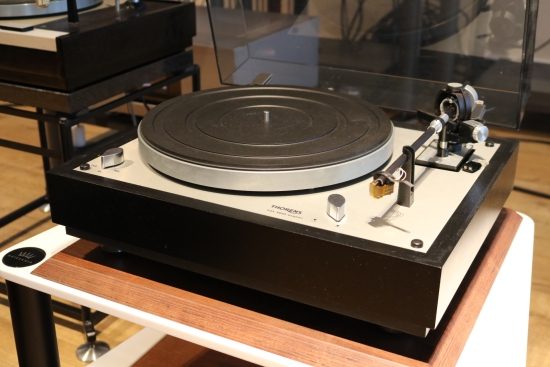
Above: TD160 Super; below: TD125MkII
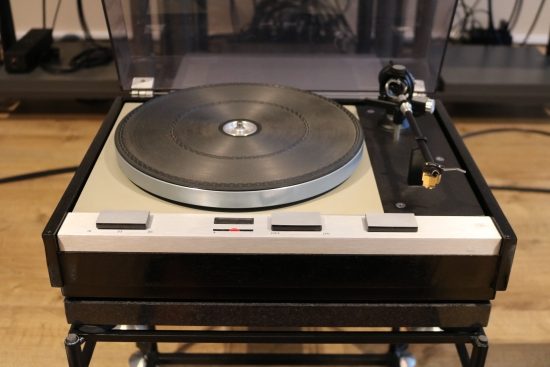
With the TD 150 model, the production was relocated from the Swiss Jura to Baden in Germany. In Lahr, a factory was purchased together with studio manufacturer EMT. The “Thorens” brand, however, remained in Switzerland. In the following years, the sub-chassis principle was further developed in other models such as the TD 125, the TD 160 series with its derivatives, and the TD 126 models. In many ways, these turntables form the technical “DNA” of the Thorens brand, the basis on which the brand’s reputation is based. In addition, these models were always accompanied by a very good price-performance ratio. Sound technology and good sound for a fair price.
A parallel line of models was added in the 1980s, which now used leaf springs instead of the proven conical springs. This resulted in the TD 520, TD 2001, and TD 3001 models. Both lines were produced in parallel and each found its respective enthusiasts. When the CD started its triumphal journey and the world of vinyl became ever smaller, Thorens also felt the change and despite several rescue efforts the brand had to say goodbye to the market in the late 1990s and the factory closed its doors. Previous attempts to diversify with electronic components, such as CD players and amplifiers, unfortunately also failed. The brand was taken over by a Swiss trader and in the following years, several new models came on the market. The focus of the product portfolio was on cheap automatic players and the classic Thorens DNA was only reflected in some of the products.
In May 2018, Gunter Kürten, an old acquaintance from the German audio industry, took over the Thorens brand with a small but very dedicated team. Since then, it has been of great importance to him and his team to breathe new life into the old, genuine Thorens’ DNA. It was the desire to revive the old virtues in new models without ignoring the past. Within a year, a series of new Thorens models was designed and developed. The all-new models that were presented during the High End 2019 in Munich are a visual reminder of the successes of earlier times and series. Technically proven classic techniques have been combined with new ideas. Proven belt drive, a sub-chassis, regulated power supplies and a more than excellent tonearm, combined with a fair price-performance ratio, form a solid basis for contemporary vinyl pleasure.
This short Thorens history was sourced in part from the LookenListen website, translated from Dutch and edited for conciseness.
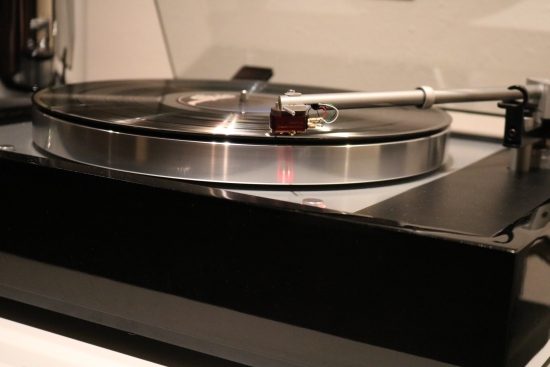
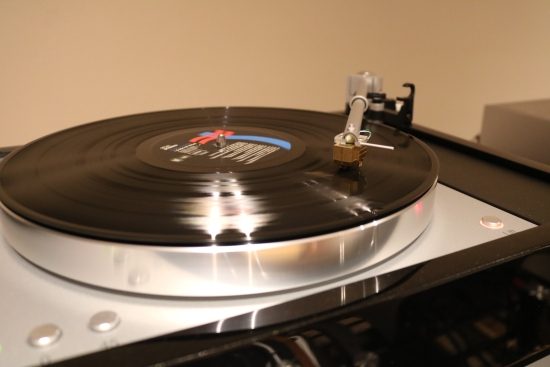
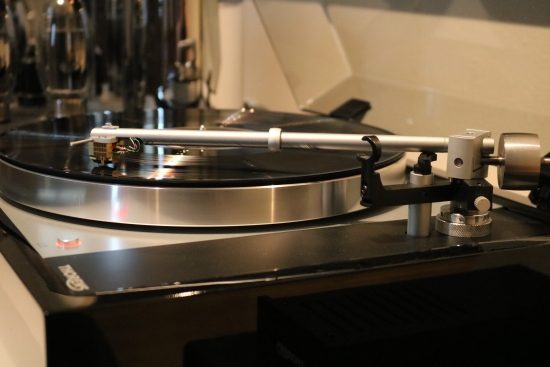
TD1601
Upon first unpacking the TD1601 and lifting it onto the reserved spot on the audio table, I was immediately struck with a “must-have it” sensation. Why? It’s a combination of things. The proportions, the weight, and solidity, the appearance of the buttons, feet, and connections, and the looks of the arm, everything about this turntable is just right. It breathes a very distinct TD160 air but simultaneously makes it very clear that this is not just a classic player in a new jacket. This feeling is further substantiated when lifting the platter from the sub-platter as the fit is now very noticeably tighter and both the platter and sub-platter are finished to a substantially higher standard. The motor is a 16V DC model that sits in an oil-damped bath within a rubber enclosure and to my relief, the belt is exactly the same as the one that is used for the entire range of classic players and therefore fully and easily exchangeable.
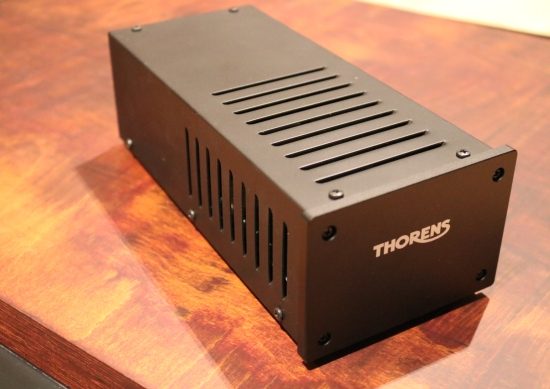
External regulated power supply
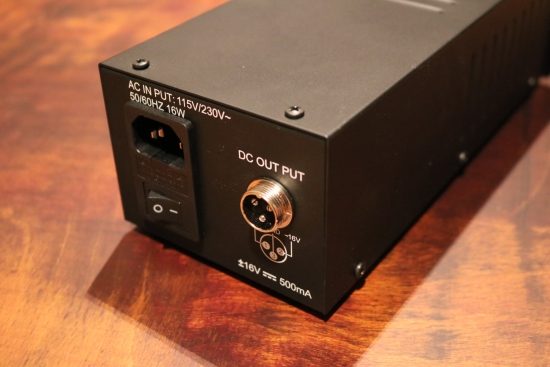
Changing the speed between 33 and 45 is now done electronically meaning that the belt always remains in place. A new feature is that the sub-chassis now sits on top of 3 conical springs rather than hanging off them to enable easier leveling. A potential downside of spring suspension is that the sub-chassis can tend to wobble laterally in addition to the intentional vertical movement. As a first in Thorens history, the TD1601 very cleverly counteracts this by means of a string that is tensioned between the sub-chassis and the cabinet. In use, this very effectively makes for a steadier sub-chassis while introducing no audible artifacts that I can detect. The mat is also upgraded, now of a more compliant rubber and supporting the entire record rather than with the two concentric rings as it was with the classic rubber mats.
The sub-platter is now locked in place, in order to prevent transport damage and potential damage by uncareful removal or reinsertion of the steel axle or the bronze bearing. The latter sits on a Delrin disc, which is a brand name for Polyoxymethylene or POM. The load on the bearing is very low and the bearing is essentially maintenance-free. Thorens expects the oil does not need changing for at least 10 years.
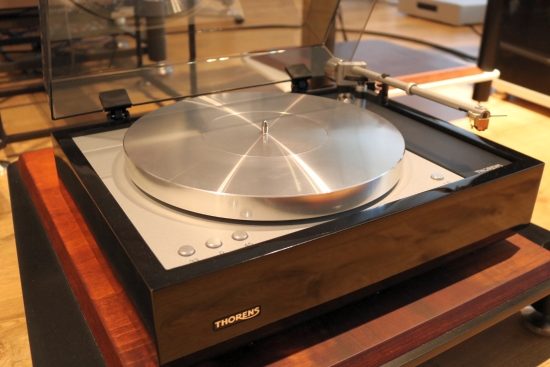
Above and below: tighter tolerances and a more refined finish are evident on the platter and sub-platter
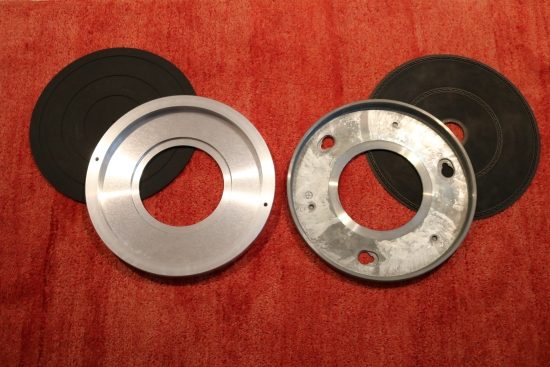
While the diameter is the same, the differences between the classic platter and the newly designed one are obvious.
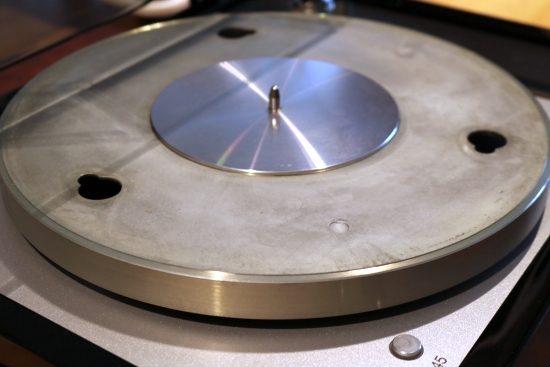
The new arm lift works via a Thorens-developed mini-motor which is also activated automatically at the end of the record. As the detection is done via an optical sensor there is no way that this could interact with the free movement of the arm.
For 500 euro less, the TD1600 is the very same turntable as the TD1601 minus the electronic arm lift and the auto-shutoff function. Although there’s nothing wrong with manual cueing of the arm, the beauty of the classic Thorens designs was always that the knob for this was mounted on the main chassis and not on the sub-chassis which allowed rock-steady arm movements. The electronic button on the TD1601 achieves the same effect. For the manual TD1600 design, however, the arm lift lever is mounted on the arm itself, meaning that there is the potential to make the arm and platter wobble up and down when cueing. This may also be a reason to opt for the TD1601 over the TD1600.
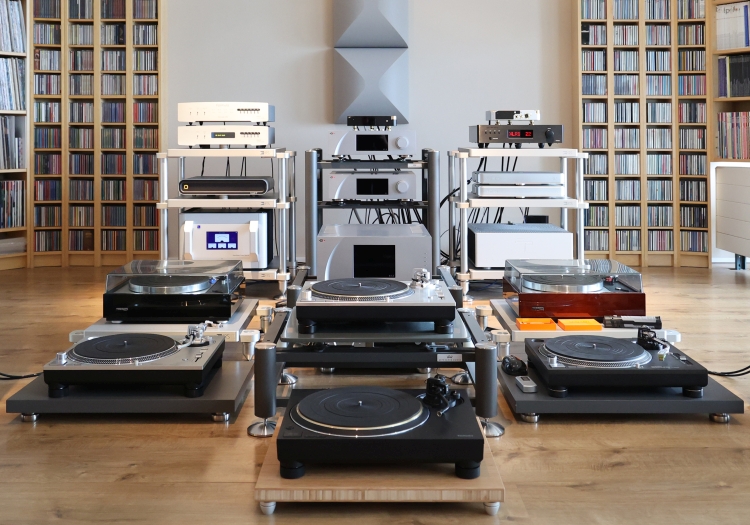
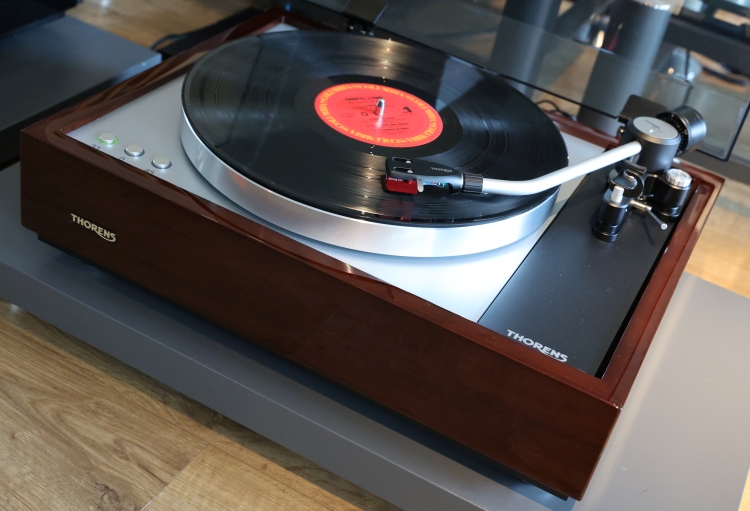
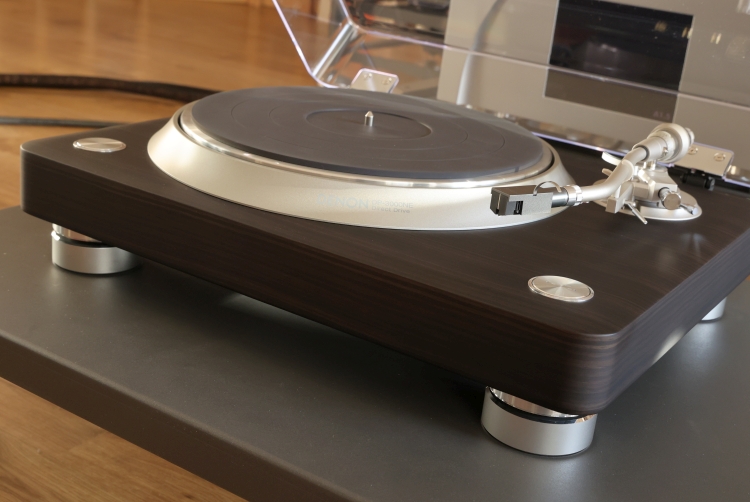
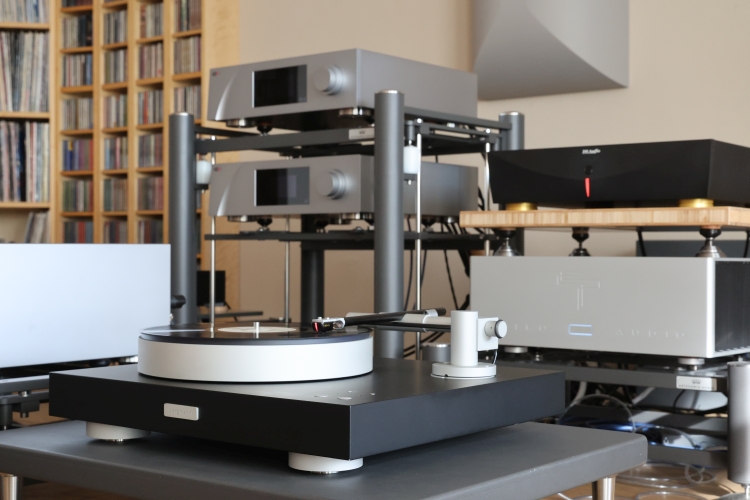
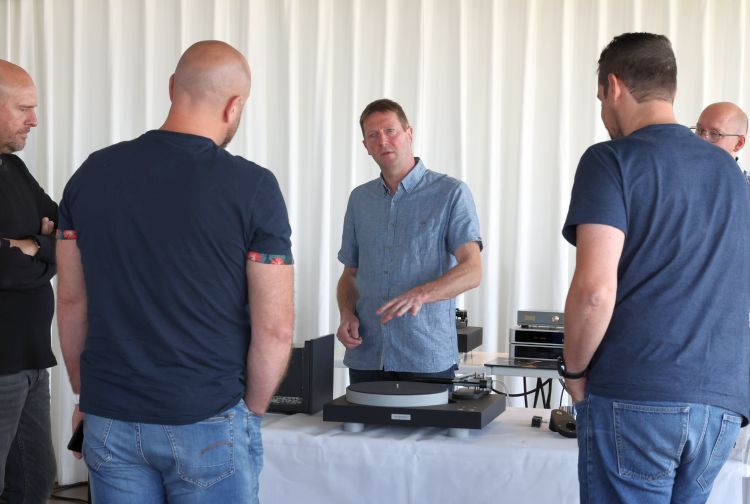
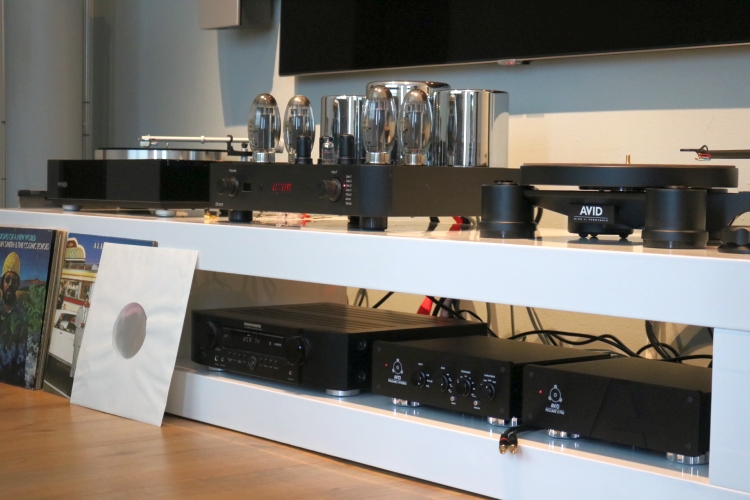
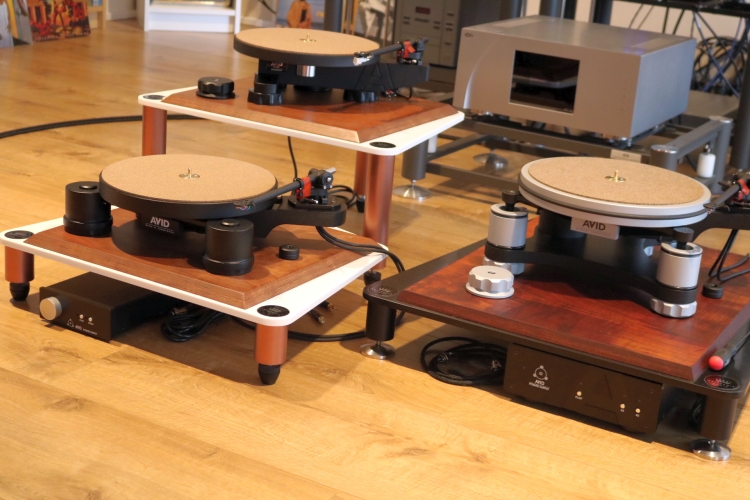
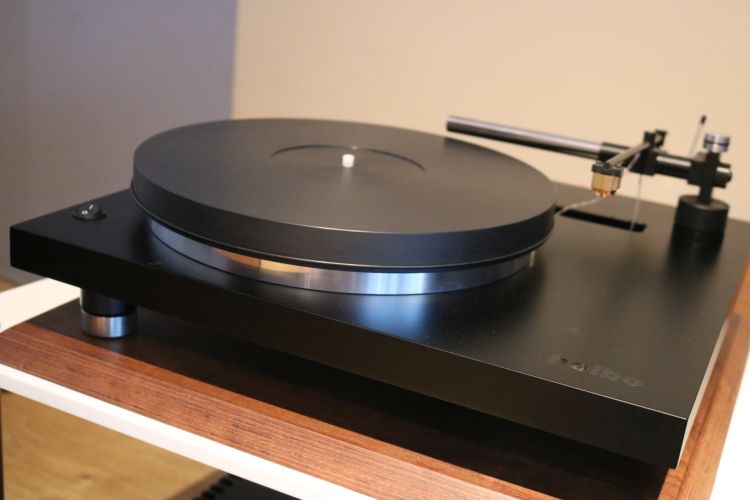
Thank you for such an informative review. However I would like to point out that the 3 point suspension with coupled sub-chassis, platter and tonearm with board was invented by H.H. Scott in 1955 with the model 710. It did not use a belt but rather a shaft drive.
Then in 1958 there was the Stromberg Carlson Perfectempo that was belt driven via variable speed cone drive to the belt pulley. It was invented by Raymond C. Siebert. This was followed in 1959 by the Australian made belt driven Orpheus Silex with a 3 point sub-chassis. However instead of springs it used dampers.
Thanks for the additional info, John. I have now slightly modified the article to make it more accurate.
Dear Christiaan,
I read your test of the new Thorens TD1601 with great interest. Do you have any idea if the Audiotechnica AT33PTG/II or AT33SA would be even better than the AT33EV you tested? Forty years ago, I had a Thorens TD115 with an
Audiotechnica AT32E, my first moving coil, and loved it!
Thanks!
Hi Günther, spec-wise, the AT33PTG/II or AT33SA should also work equally well with the TD1600/TD1601’s TP-90 arm. Of the two, I would personally be interested to try the Shibata version. One thing to keep in mind is that the TD1600/TD1601 are neutral and very lively and both the AT33EV and Denon DL-304 are relatively sweet and even a little romantic. Thus, depending on the rest of the system and unless one is looking for the tightest, cleanest, most articulate sound, sticking with a cart that is slightly on the warm side of neutral might yield the best balance.
Technically, both the PTG and the SA will be better than the EV because the latter has a simple elliptical stylus. But then, there’s also the very relative matter of musicality:-) The EV sure is sweet and smooth as well as powerful and although I have not yet heard the others, chances are that the PTG is more precise but also relatively drier. That said, since I buy a lot of second hand vinyl, I do prefer accurate tracking over a more forgiving sound. The 33SA is interesting because it has a Shibata stylus which, based on experience that I have gotten so far, seems to fall neatly in-between an Elliptical stylus and a fine line or micro line stylus. I certainly plan on trying more cartridges in the TD1601 but at the moment I have not yet planned this.
Thanks, Christiaan!
After reading your review of the Origin Live Calypso with the illustrious tonearm, I decided to follow that route and I’m very pleased. Following Mark Baker’s advice I got a Soundsmith Zephyr moving iron cartridge to connect to my Devialet 200 amp and it sounds fantastic! Thanks for enlightening reviews with products that are not mainstream but always outstanding (that includes power products by GigaWatt, which I have been using for over a year now, long before I read about them in your website.
I was wondering what anti skating settings was used? I have the same combo (at 33ev) and my settings are almost at max. which bothers me a bit. From the pictures in the story I can see a default setting.
Some pics may not show the latest state of affairs. I used it with a guesstimated setting between the second and third indentation from the right. Unlike with the Origin Live (and ViRA Aidas Rainbow cart), I’ve not yet come across blatantly bad-sounding records that necessitated a closer look at the precise anti-skating level. However, my own sample came without a cart and the At150mlx that I have been using so far is just not ideal to begin with. I recently ordered an AT33 sa that I will mount in the 1601 and will also soon dive into the Analog Magik software and this will no doubt lead to my having a closer look at the anti-skating setting.
Thanks for the comment. I am curious about your findings. Please let me know.
Hi Steven, when I get the new cartridge, I will post a review of it in which I will relay my findings with respect to the 1601 and its parameters.
Mooie en uitgebreide review ik zou graag een nieuwe platenspeler willen kopen maar kom er niet uit mijn shortlist zijn er 2. de td1601 en een Linn lp12. De linn kan uitgevoerd worden met een nieuw loopwerk walnoot Fluted plint, karousel, kore, Lingo 3 en akito of ittok arm. Het verschil is ongeveer een 2k. Is het dit waard, zijn er ook genoeg servicepunten in Nederland voor zowel Thorens als Linn. Ik kom er zelf niet uit…. En ben niet in de mogelijkheid om ze allebei naast elkaar te luisteren. Alvast dankjewel!
Hi Henri, it’s impossible for me to advise you on this as it is very much a personal matter. For me, based on the comparisons that I did so far, the Thorens sounds more to my liking. Cost/performance, the Thorens also has the upper hand. But the Linn’s sound ties in very heavily with the arm that is used, so my impressions so far are relative and not at all conclusive. I believe that the Linn’s basic platform is great but maybe the product has been hyped a little bit too much. In any event, I’m not a big fan of all the Linn upgrades, while they certainly improve various technical aspects, I’m not convinced that they are essential in getting the player to sound emotional and musically pleasing. Even with all the upgrades in place, when paired with a sub-par arm, the end result is still sub-par. Thus, I would always favor a better arm versus upgrading other parts.
Finally, you could also consider the TD1600 which is the very same turntable as the TD1601 but minus the arm motor and the auto cut-off. Omitting these features makes it cheaper, faster to operate (manual arm lift), and likely more reliable.
Hi Christiaan,
Thank you very much for your answer. In your review of the TD1601 it was just a plus to avoid the wobble of the platter with the button, and I would say I like this plus. But I also read that some people have trouble with the armlift, it stops before the end of the record. I saw a youtube instrcustion how to fix this but nevertheless. Leaning more to the TD1601 because of your review and also tuntable comparison in another review from you!
Hi Henri, Nice to hear my reviews are helpful:-) Indeed, avoiding the wobble was my main motivator for choosing the 1601 over the 1600 but I later also found that the auto-stop optical system required some tweaking. This was easy to do but if you’re not technically inclined and don’t like opening equipment, and also want total control over the arm movement, then I can see the benefit of the manual arm.
Hi
I own and used the Thorens TD1600 now for a few months and I am very pleased with it. Besides the very good looks (black high gloss) it sounds in my set very good. I use a Primare i15 amplifier and a R15 phono stage. Spendor A1 speakers and Ricable cables. An AT 0C9XML mc cartridge installed. And that is the only downside of this, I installed it and configured it myself. To difficult to do this properly. I think I could get more of it. So buy yours at a shop where a skilled person can do this for you. Other thing is support by Thorens. Not very helpful. I asked questions about the anti skate working but they could not help me. Go to your dealer they said. Last words. Next time I will buy a MM cart. Good MM carts these days match the quality of much more expensive MC carts. At least that’s what I am hearing from experts.
These days, MM carts can be found with the same exotic stylus shapes as MC carts, that is true. Jico, for instance, has fantastic replacement stylii for many MM cartridges. Also, the quality could be said to be comparable, as long as you buy in the same price bracket. However, besides hypothetically better or worse, MC and MM usually lead to very different results and this also ties in deeply with the arm and phono stage. It’s too deep a rabbit hole to get into here but all the variables mean that you may obtain better results (either objectively or subjectively) with one or the other.
Hi Christiaan,
Totaly agree with you, for such an amount of money I will Buy at a dealer who can give proper support. Curious of course which MM cart you Will buy next time….
Thx!
Hi Henri, Me too:-) For now, I am more into MC carts. But if and when I do find a really nice MM cart, I will definitely make a review.
Have you heard about the new Thorens 1600/1601 new tonearm TP 160? Sounds delicious and would be curious how it compares to the TP-92. The TP-180 tonearm looks better too.
As a matter of fact, I will soon review that combination, but alas, for Dutch printed magazine HVT, not here on HFA. But I do look forward to hearing it and comparing it to the TD-1601 with TP-92 arm.
Hope you might review the Thorens TD-1500. Fully manual like the TD-1600, but the Thorens website states the tonearm is modeled after the arm in the top of the line TD-124DD, minus any cueing of course.
I do have the TP160 installed on my Thorens TD1600. And boy what a difference with the TP92. Much much better sound. Depth and detail are much more present. And… anti skating works as expected!! (See my older note) With my AT cart just below 1 on the low site but it sounds marvellous. Thorens Germany replaced the tone arm for me.